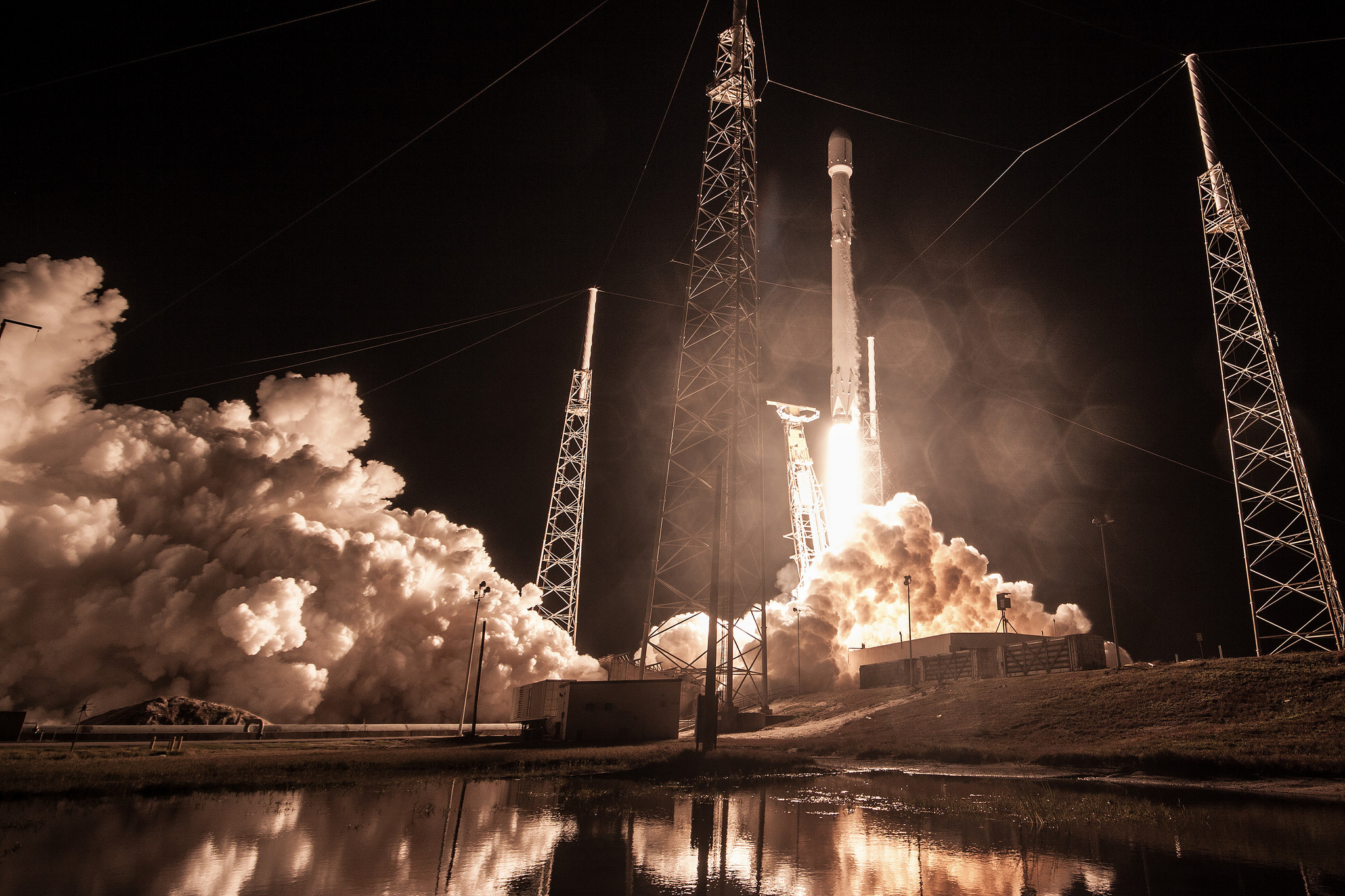Lawmakers Prod SpaceX and NASA on Fate of Secret Zuma Mission
House lawmakers on Wednesday (Jan. 17) pressed SpaceX and NASA officials on what exactly happened to the secret Zuma spacecraft launched into space this month on one of the company's Falcon 9 rockets.
SpaceX representatives, including Gwynne Shotwell, the president and chief operating officer, have firmly stated that the rocket functioned correctly during the classified mission, which launched Jan. 7 from Cape Canaveral Air Force Station in Florida. After the launch, media rumors suggested that the mission had failed to put its classified payload in orbit, citing unnamed U.S. officials who had been briefed on the mission.
But House lawmakers still had questions: Rep. Brian Babin, R-Texas, the chairman of the House Space Subcommittee, raised the issue of Zuma as the first question during Wednesday's hearing about the progress of the commercial crew program, asking NASA and SpaceX representatives what they could share about the seeming failure. [Strange Sky Spiral from SpaceX Zuma Launch]
"Recent press reports indicated that a U.S. government mission named Zuma may have either failed in orbit or the launch could have been unsuccessful," Babin said. "I do not want to discuss anything classified in an open session, [but] the circumstances surrounding this mission do have a direct impact on NASA and this committee's jurisdiction and oversight responsibilities."

For instance, he said,the Falcon 9 is scheduled to launch a large exoplanet survey telescope for the agency in March, and eventually launch astronauts to the International Space Station. Plus, the defense contractor Northrop Grumman, which built Zuma and the payload adaptor that connected it to the rocket, is currently working on the $9 billion James Webb Space Telescope. (Outlets such as Ars Technica have speculated that the payload adaptor could have failed, leading to the satellite's demise.)
So would SpaceX consider briefing the committee on the mission in a classified setting, Babin asked?
"I want to point out, on the Zuma mission, that we relayed the information that Falcon 9 … performed very well as specified, and that we are picking up the launches by the end of the month as we planned all the time," Hans Koenigsmann, the vice president of build and flight reliability at SpaceX, told the committee. "Regarding a briefing, we will go through the proper channels, and follow the protocol — as you pointed out, we can't talk any details in this particular setting."
Get the Space.com Newsletter
Breaking space news, the latest updates on rocket launches, skywatching events and more!
Next, Babin turned to NASA, asking William Gertenmaier, associate administrator of the Human Exploration and Operations Directorate at NASA, whether anyone at the agency knew details of the mission. After all, he said, any problem with the Falcon 9 rocket would be important to know before using the rocket in NASA's missions to the space station.
"We do not know the details of the mission, per se, but we've been informed by others that if there's any mishap investigation or any other activities that are involved, we will be appropriately involved in that activity," Gerstenmaier said.
"If this is declared a mishap and we understand that it's a mishap, NASA will be informed, and we will have appropriate personnel participate in those mishap activities," Gerstenmaier added after further questioning.
Later in the briefing, Rep. Mo Brooks, R-Ala., vice chair of the subcommittee, read aloud from a commentary published on the Forbes magazine website Jan. 15 written by Loren Thompson, a consultant who is chief operating officer of the Lexington Institute. Brooks then asked SpaceX about Zuma, grouping the mission with Falcon 9 failures such as a launchpad explosion in 2016, during a routine static-fire engine test, and a rocket breaking apart 2 minutes after launching cargo toward the International Space Station in 2015.
Koenigsmann talked through the other failures, saying that SpaceX had learned their lessons from those, but again reiterated that for Zuma: "I can't, unfortunately, present any details; I can only reiterate that Falcon 9 did everything Falcon 9 was supposed to do."
When asked previously for comment about the failed mission, a Northrop Grumman spokesperson told Space.com that the company cannot comment on classified missions. This puts SpaceX in a challenging position as questions about the mission have been redirected to the rocket company (including by the Pentagon).
The questions came up during a hearing primarily aimed at evaluating how well SpaceX and the company Boeing are progressing toward delivering crew to the space station starting in 2019, including the companies' reliability. The committee members' questioning makes clear that the confusion about Zuma won't die soon, as the Pentagon and Northrop Grumman continue to remain mum — and that the potential failure still lingers as regulators evaluate the reliability of private spaceflight companies.
Editor's note: This story has been updated to correct the booster SpaceX will use to launch astronauts to the ISS on its Crew Dragon capsules. An earlier version stated that Crew Dragon launches would use a Falcon Heavy rocket. SpaceX will use a Falcon 9 booster.
Email Sarah Lewin at slewin@space.com or follow her @SarahExplains. Follow us @Spacedotcom, Facebook and Google+. Original article on Space.com.
Join our Space Forums to keep talking space on the latest missions, night sky and more! And if you have a news tip, correction or comment, let us know at: community@space.com.

Sarah Lewin started writing for Space.com in June of 2015 as a Staff Writer and became Associate Editor in 2019 . Her work has been featured by Scientific American, IEEE Spectrum, Quanta Magazine, Wired, The Scientist, Science Friday and WGBH's Inside NOVA. Sarah has an MA from NYU's Science, Health and Environmental Reporting Program and an AB in mathematics from Brown University. When not writing, reading or thinking about space, Sarah enjoys musical theatre and mathematical papercraft. She is currently Assistant News Editor at Scientific American. You can follow her on Twitter @SarahExplains.









